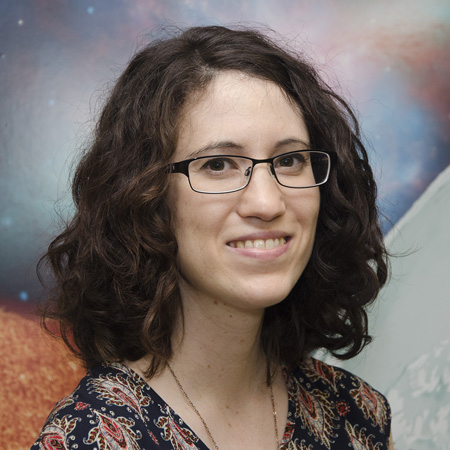Leadership
Email: meadows@uw.edu Website: Google Scholar
Bio: Victoria Meadows is an astrobiologist and planetary astronomer whose research interests focus on acquisition and analysis of remote-sensing observations of planetary atmospheres and surfaces. In addition to studying planets within our own Solar System, she is interested in exoplanets, planetary habitability and biosignatures. Since 2000, she has been the Principal Investigator for the Virtual Planetary Laboratory Lead Team of the NASA Astrobiology Institute. Her NAI team uses models of planets, including planet-star interactions, to generate plausible planetary environments and spectra for extrasolar terrestrial planets and the early Earth. This research is being used to help define signs of habitability and life for future extrasolar terrestrial planet detection and characterization missions.
Email: giada.n.arney@nasa.gov
Website:
CV / Publications: https://science.gsfc.nasa.gov/sed/bio/giada.n.arney
VPL Focus: Task A, Task B (Lead), Task E
Bio:
My research has involved modeling and measuring properties of planets with an emphasis on worlds enshrouded by global cloud and haze layers because aerosols appear to be a common planetary phenomeon. I have a dual focus on both solar system bodies and on exoplanets. I have retrieved properties of Venus’ sub-cloud atmosphere through observations of its nightside spectral windows, producing the first simultaneous and temporally resolved maps of cloud opacity, acid concentration, water vapor (H2O), hydrogen chloride (HCl), carbon dioxide (CO), carbonyl sulfide (OCS), and sulfur dioxide (SO2). I also have extensive modeling experience of planetary atmospheres and have comprehensively simulated hazy Archean Earth with a coupled photochemical-climate model to study its atmospheric composition, climate, and habitability. Using a sophisticated radiative transfer model together with a coronagraph noise model and a JWST model, I showed that organic haze on an Earthlike planet produces strong spectral signatures that may be detectable with future telescopes. In addition, I helped lead a paper on Proxima Centauri b’s possible climatic and environmental states and their spectral discriminants, and I have been involved in work identifying oxygen false positive biosignature signals. My current and near-future research focuses on modeling the atmospheric and climatic states of exoplanets, understanding the observational requirements to discriminate between different planetary states with current and future observatories, and re-visiting Venus with new observations.


